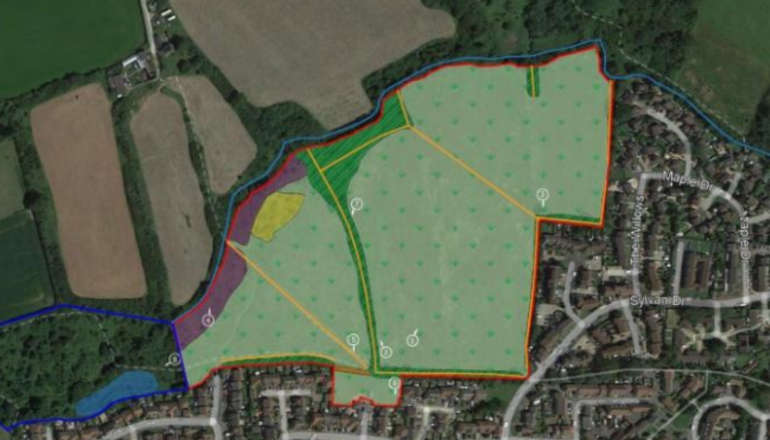
The second phase of work to upgrade traffic signals and pedestrian crossings at Coppins Bridge has finished on schedule today (Friday).
Since November 22, Island Roads has, on behalf of the IW Council, been working to upgrade the Coppins Bridge/Barton Road pedestrian crossing and signals. This follows the completion of the initial phase – improving the lights at the Coppins Bridge junction with St George’s Way.
The project will now pause for Christmas – in a bid to keep traffic flowing smoothly for Christmas shopping.
Work will resume on January 10 when the signals in Lower High Street and those between Lower High Street and Coppins Bridge will be upgraded. During this phase, the Lower High Street will be closed to traffic between January 10 and January 28.
Island Roads has previously visited businesses to discuss their individual needs during this phase and, based on feedback, have come up with a traffic management plan to meet the various delivery requirements of these businesses. This will be further discussed with affected businesses prior to the recommencement of work.
Pedestrian access will be maintained during this phase.
Island Roads service director Steve Ashman said:
“Once again we would like to thank the local community for their co-operation and understanding as we progress these works.
“During this second phase the temporary traffic lights were manually operated so were able to make adjustments if congestion built up. However I am sure some people had their journey times extended so we are very grateful that people have been patient.
“We will now be pausing the scheme until after the Christmas and New Year holiday so as not to impact upon the Christmas trade and we will be sure to provide reminders ahead of work resuming in the Lower High Street on January 10.”
The project to upgrade signals and crossings at the Island’s busiest junction is part of work under the Highways PFI to improve and maintain the Island highway network.
The work will enable the traffic signals to better adjust their sequencing according to traffic volumes and will also make them more reliable and able to use significantly less energy because of the LED lights and the far safer low voltage (48volt) electric systems used.


 Education Cabinet Member Faces Renewed Round Of Questions From Concerned Residents
Education Cabinet Member Faces Renewed Round Of Questions From Concerned Residents
 Man Jailed After burglaries Armed With Baseball Bat And Firearm
Man Jailed After burglaries Armed With Baseball Bat And Firearm
 Retailers Say Hampshire & Isle Of Wight Constabulary Is Best At Responding To Retail Crime
Retailers Say Hampshire & Isle Of Wight Constabulary Is Best At Responding To Retail Crime
 Full Council Opposes School Closure Plans In Blow To Cabinet
Full Council Opposes School Closure Plans In Blow To Cabinet
 Eight Electric Vehicle Charging Bays Could Be Installed In Isle Of Wight Town Centre
Eight Electric Vehicle Charging Bays Could Be Installed In Isle Of Wight Town Centre
 New Drop-In Sessions Announced For Isle Of Wight Dementia Strategy Review
New Drop-In Sessions Announced For Isle Of Wight Dementia Strategy Review
 Plans To Enhance Luxury Freshwater Seafront Hotel Approved
Plans To Enhance Luxury Freshwater Seafront Hotel Approved
 Thousands Of Pounds Of Investment Needed If Housing Development Goes
Thousands Of Pounds Of Investment Needed If Housing Development Goes
 Isle Of Wight College Firearm Report Sees 17 Year-Old Arrested In Cowes
Isle Of Wight College Firearm Report Sees 17 Year-Old Arrested In Cowes
 Major Island Policy Forum To Consider Plans Aiming To Make Suicide Prevention 'Everybody's Business'
Major Island Policy Forum To Consider Plans Aiming To Make Suicide Prevention 'Everybody's Business'
 Latest Scam Warnings Issued For Isle Of Wight
Latest Scam Warnings Issued For Isle Of Wight
 First Acts Announced For Cowes Fringe 2025
First Acts Announced For Cowes Fringe 2025
 Six Island Charities Supported By WightAID In Final Giving Round Of 2024
Six Island Charities Supported By WightAID In Final Giving Round Of 2024
 Two New Sites For Isle Of Wight's Gift To Nature
Two New Sites For Isle Of Wight's Gift To Nature
 Councillors Lodge Motions Ahead Of Landmark School Closures Debate
Councillors Lodge Motions Ahead Of Landmark School Closures Debate
 Ryde Town Centre Victorian Warehouse Could Get Three New Flats
Ryde Town Centre Victorian Warehouse Could Get Three New Flats
 Controversial Bid To Build Renewable Energy Park Near Island Village Re-Emerges
Controversial Bid To Build Renewable Energy Park Near Island Village Re-Emerges
 East Wight Road Improvement Work To Take Place In February
East Wight Road Improvement Work To Take Place In February
 Island Parish Council Loses Second Clerk In Less Than A Year
Island Parish Council Loses Second Clerk In Less Than A Year
 Heavily Criticised Newport Edge Of Town Housing Plans Resurface
Heavily Criticised Newport Edge Of Town Housing Plans Resurface


